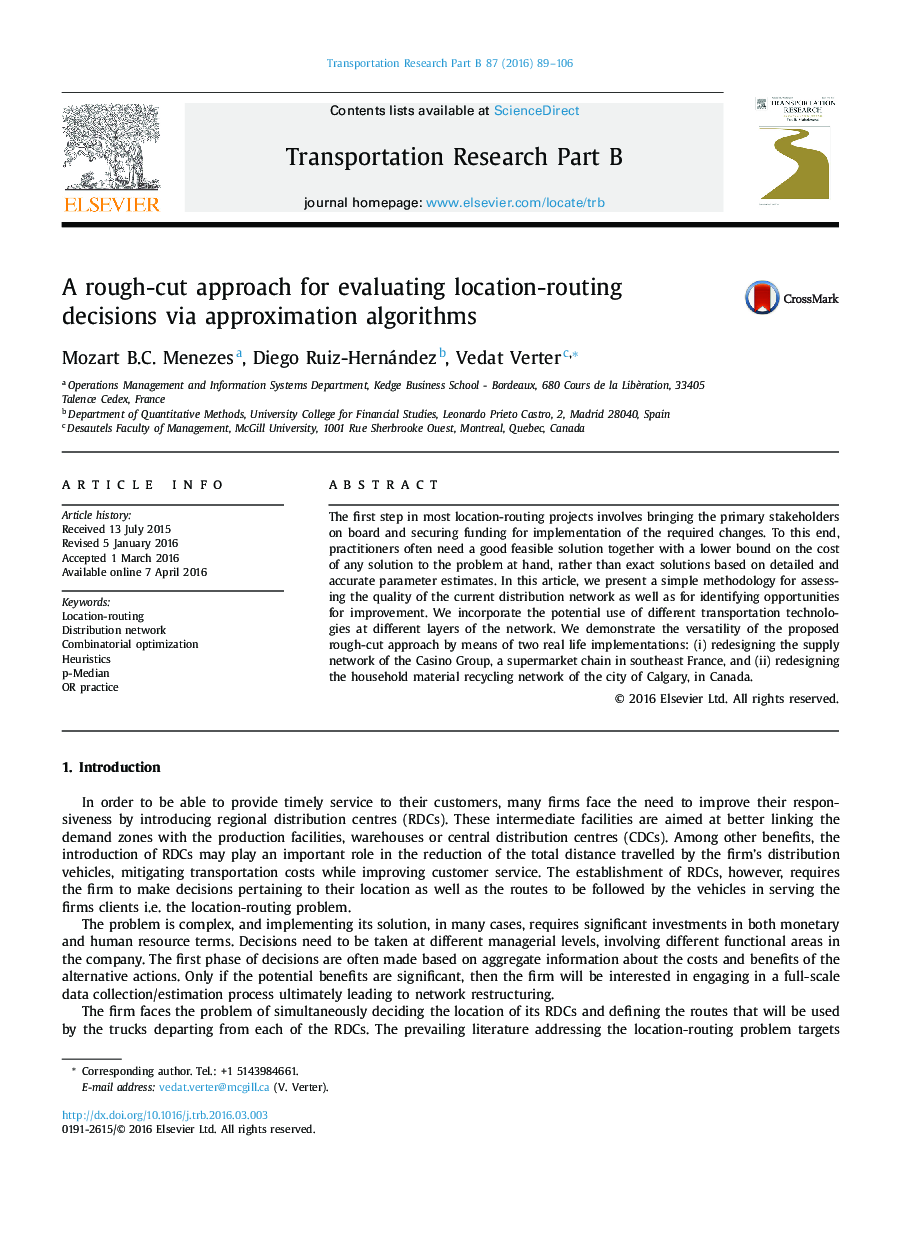| Article ID | Journal | Published Year | Pages | File Type |
|---|---|---|---|---|
| 1131590 | Transportation Research Part B: Methodological | 2016 | 18 Pages |
•Point out the significance of preliminary information concerning potential costs/benefits for the first phase decisions pertaining to location-routing projects.•Suggest practical benchmarks as a pair of a feasible solution and a lower bound on the cost of a solution.•Provide a technique for identifying such bounds based on the p-median problem.•The methodology relies on a pragmatic transformation of the distance matrix.•Two real life implementations illustrate the versatility of our rough-cut approach.
The first step in most location-routing projects involves bringing the primary stakeholders on board and securing funding for implementation of the required changes. To this end, practitioners often need a good feasible solution together with a lower bound on the cost of any solution to the problem at hand, rather than exact solutions based on detailed and accurate parameter estimates. In this article, we present a simple methodology for assessing the quality of the current distribution network as well as for identifying opportunities for improvement. We incorporate the potential use of different transportation technologies at different layers of the network. We demonstrate the versatility of the proposed rough-cut approach by means of two real life implementations: (i) redesigning the supply network of the Casino Group, a supermarket chain in southeast France, and (ii) redesigning the household material recycling network of the city of Calgary, in Canada.
